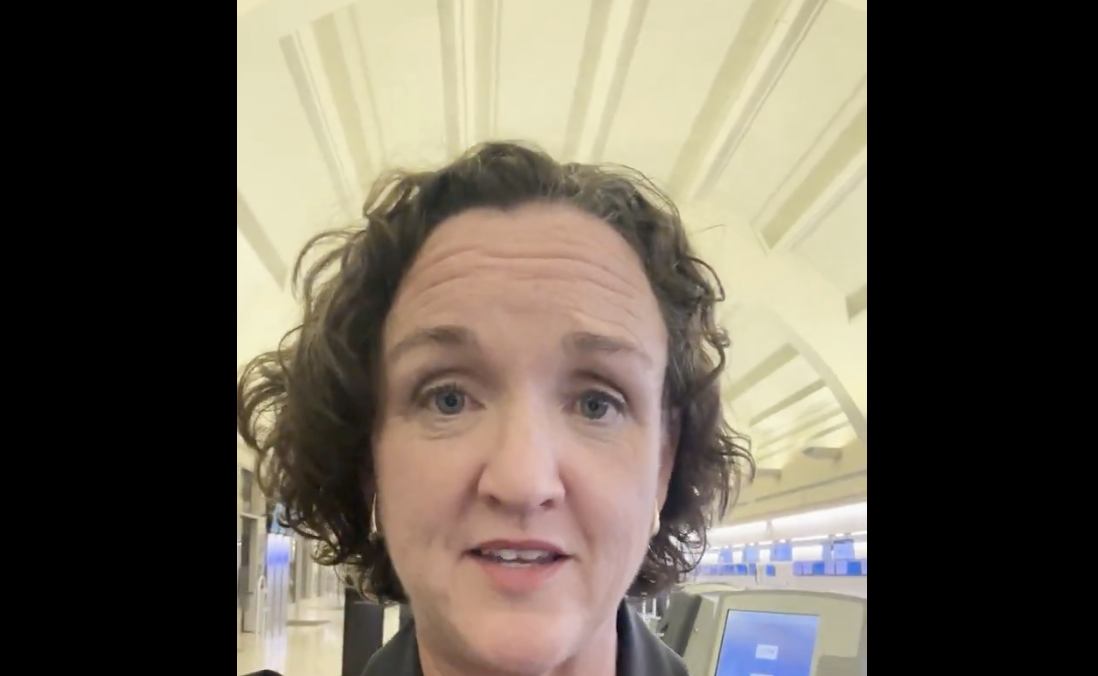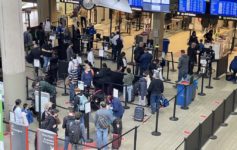Katie Porter says cut private jets, not commercial. With a 10% flight reduction looming from the shutdown, is she right about where to trim?

FAA Reduction: Why Airlines Are Being Told To Fly Less
Because of the ongoing government shutdown and mounting fatigue among unpaid controllers, the FAA and DOT have ordered a phased reduction in domestic flying across 40 high-volume markets. The plan starts with roughly a 4% cut and ramps to 10% beginning November 14. Long-haul international is exempt, but big domestic hubs will feel it. The agency frames this as a safety move to keep the system stable while staffing is strained.
Just a sampling of the markets affected are:
- Ronald Reagan Washington National (DCA)
- Boston Logan International (BOS)
- Newark Liberty International (EWR)
- Anchorage International (ANC)
- Los Angeles International (LAX)
- Atlanta Hartsfield International (ATL)
The resiliency of air traffic controller staff, many of whom are working without pay, has been incredible and the sector was already short staffed as covered here and elsewhere over the years.
California Gubernatorial, Katie Porter’s, Says Ground Private Jets
You will see the clip embedded below. In it, California gubernatorial candidate (and Former US Representative) Katie Porter calls on President Trump to cancel private jet flights rather than commercial flights that regular travelers use. It is a politically charged message, but she makes a fair point to examine: if the system needs relief, where should that relief come from, and who should share the burden.
NEW: I’m calling on Trump to cancel private jet flights instead of commercial airlines.
Private jet flights often take a single billionaire passenger, but still put real strain on our air traffic control system.
Trump is choosing to target commercial airlines that the rest of… pic.twitter.com/WJiC6X4fiI
— Katie Porter (@katieporteroc) November 7, 2025
How Many Private Jet Flights Happen Daily
Private flying is not a rounding error. ARGUS TRAQPak data tallied about 3.09 million US private jet segments in 2024. That works out to roughly 8,450 flights per day across the calendar year. Activity dipped slightly year over year, with fractional programs up and both Part 91 and Part 135 down a touch. Even with the dip, that is a large daily footprint in crowded airspace. By comparison, the FAA handles approximately 45,000 total flights so the private sector is about 18.7% of the total workload.
Corporate vs. Recreational: Part 135 And Part 91 Are Not The Same
Initially, I was skeptical with regard to the quantity of activity – there just aren’t that many private jet flights for that to make a difference. Then I pulled the numbers and found the last US domestic number from 2022 was incredibly high. It was so high, in fact, that I doubted the veracity of those reports and suspected that it might have included recreational flights by hobbyist pilots or flight instructors and training. Those certainly still require FAA flight planning, often utilize airport operations, and air traffic controller time, effort, and concentration.
However, the numbers are even larger for hobbyist flights and training.
Not all private flights are created equal. Part 135 covers on-demand charter and air taxi operations sold to the public, subject to tighter crew duty, maintenance, and oversight rules. Part 91 is noncommercial use, like a company shuttle or an owner flying for personal reasons, with fewer economic regulations but still bound by safety rules. Lumping both together misses meaningful differences in how they are regulated and how changes ripple to travelers and businesses.
Could The FAA Legally Cap Private Jets?
The FAA controls the nation’s airspace and can assign or limit its use to keep operations safe and efficient. The law recognizes a public right of transit, which means the bar to selectively shut out a class of users without a clear safety basis is high. The agency already uses system-wide tools like ground delays, ground stops, miles-in-trail, and airspace flow programs to meter demand fairly across users when capacity drops.
If the FAA wanted to target reductions in general aviation, it would likely do so through neutral traffic-management initiatives, not a blanket ban on private flying. Should that change in the future is a policy question for Congress, since changing who gets priority in the sky usually requires more than an administrative tweak. It’s less likely that the law would be changed to specifically call out which flights are cancelled, but it may state the Federal Aviation Administration is responsible for the entire skies and thus should have control over all aspects of flight.
What A 10% Private-Flight Cut Might Look Like
Apply the shutdown math to private jets and you are talking about roughly 850 fewer private flights per day. Those are broad numbers as the data isn’t clear about how many of those flights are domestic vs international and if alignment is the goal, international flights would have to be exempt to match the commercial sector.
The FAA could achieve something like that without singling out “private jets” by name. It could run broader traffic-management programs that allocate fewer slots in saturated metro areas and peak hours, raise miles-in-trail requirements, and expand ground delay programs during staffing pinch points. Those tools spread pain across all users that touch constrained airspace. In practice, high-frequency charter corridors and peak-hour repositioning flights would likely catch more delays, while life-critical missions and scheduled service keep priority through existing exemption processes. But this is reduced flight traffic by effect rather than assignment: make it inconvenient and travelers will cancel rather than deal with the undesirable outcome.
The draft in connection with the Vietnam War may be a model for how the government can eliminate same day flight plan filings, then randomly cancel filed flight plans until it meets the quota. In practice, the 1970s oil crisis is a closer method with less intervention. Rather than restricting movements by tail number, the FAA could find another identifier to achieve the task. The issue with this model is that chartered private aircraft could be swapped if one tail isn’t permitted to fly and another is, whereas in the oil crisis, a person wouldn’t be able to change their license plate on their car as it suited them.
It could also restrict flights into major markets on the 40 airport target list like Los Angeles International Airport, and push that traffic to smaller airports to defray the work. At the major locations like Cleveland, Atlanta, etc., the work load would remain the same but closer in, the goal could be achieved.
Is Porter Right To Call For Cutting Private Jets First
Former Rep. Porter’s message will land with a lot of travelers who see airlines told to trim schedules while Gulfstreams still roam free. Airspace policy is more complicated than a viral clip, though. In this instance, the FAA doesn’t have the right to enact her plan and either it wasn’t researched, or “facts be damned” if it makes a clever clip.
The FAA’s current order is targeted at safety and controller workload, and it leans on tools that reduce demand without picking winners and losers by aircraft type. If Washington wants a different hierarchy during crises, that debate belongs with lawmakers. In the meantime, the agency already has levers to meter flow across all users, and it is using them as the shutdown drags on.
Conclusion
The shutdown-driven 10% cut is a blunt instrument, but it is aimed at preserving safety in a fragile system. Porter’s video puts a spotlight on private aviation, and the numbers show it is a sizable slice of daily activity. Still, the FAA’s authority pushes it toward neutral flow management rather than bans that target a specific class. If the country wants private flying to absorb more of the reduction during crises, that will require a clear policy choice from Congress. Until then, expect the agency to keep dialing demand down across the board with the tools it already has.
What do you think?




While this hag treats her staff and others like sh#t. Trying to be for the people isn’t going to work but any conservatives still living in CA deserve everything they get.
I hear every excuse on why they “can’t” move and it’s all BS. They must like being cucked living somewhere where their vote will never count in a statewide election.
Good detailed, factual story by the way.
Oh, so now you care about workers? Interesting because you punch-down on here all the time… seems like crocodile tears to me…
Did she make this video while berating her staff to get her feed bag ready?
Doesn’t seem so, and I bet she regrets her prior misbehavior. I bet you’ve always treated others with dignity and respect, and never ‘lose your cool,’ ever. Proud of you, sir.
I don’t even like Katie Porter, personally, but this is the way. Until something affects the billionaires, nothing will change. Do it. Ground their jets. This’ll end today. And, even if it doesn’t, good riddance; Musk, Bezos, Theil, and the rest exploited everyone and public resources to hoard their wealth. Let them feel some pain for once. Horrible people, all of them.
Democrats can open the government right now. Vote for the Clean CR so the negotiations can resume. Democrats are in the minority and should respect the majority. The Republicans voted for clean CR’s when they were the minority. BTW, I am sure Katie Porter’s behavior was not a one off, but her true personality.
Oh, Mike, it’s been a while…
Your hero, Donald J. Trump, repeatedly said: “A government shutdown falls on the president’s lack of leadership. I mean, problems start from the top and they have to get solved from the top. A shutdown means the president is weak.”
Spin all you want. Republicans control all three branches of the federal government. Senate Republicans can end the shutdown today by earning Senate Democrats votes on a bi-partisan budget, which includes healthcare for Americans.
Yet, I presume, you’ll support your Dear Leader, and his recent push for Senate Republicans to ‘go nuclear’ and continue their tax cuts for billionaires while Americans starve.
Buddy, when those floodgates open, expect DC and PR statehood, vote by phone, end to section 230 (liability for social media companies using their algorithms to boost right-wing disinformation), codifying Roe, expanding the court, UBI, and more, just to start.
Republicans are grifters and losing losers; they’ve failed to deliver affordability. Voters are finally starting to realize this. 358 days until the midterms. Y’all cooked.
Nah, Republicans would rather heath care and have people starve rather than release the Epstein Files.
Zing!
GOP… Guardians of Pedophiles…
She is spot on—-stop all non commercial flights until this is solved
With the click bait headline, I was thinking this is just another candidate with headline climate change or screw the rich ideas that can’t actually be implemented.
And I think she’s a nut, albeit from a few video clips I’ve seen from a balance of sources.
Under current circumstances, I don’t disagree with her idea.
So, you AGREE with Katie Porter… huh. How bout that.
What an ugly woman, both inside and out.
Same to you, Walter.
Any publicity is good publicity, and Katie knows this will get her some publicity. It’s especially pleasing when that publicity is at the expense or those ghastly billionaires who oppress all her potential voters.
Maybe stop carrying water for billionaires, Pete. They’re leeches on society. C’mon, mate!